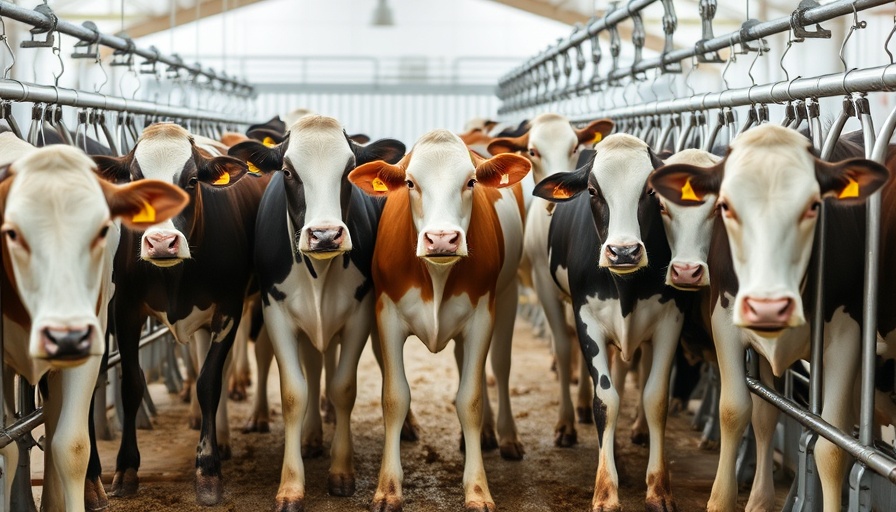
Understanding the Impact of Power Outages on Dutch Agriculture
The reliability of the Dutch electricity grid is a point of pride for the nation, known to be one of the safest in the world. Despite this, the looming threat of power outages, especially extreme cases like those experienced in Spain and Portugal, raises significant concerns for farmers, particularly within the dairy industry. A prolonged power cut can lead to devastating consequences for livestock welfare and business operations.
Why the Dairy Sector Is Particularly Vulnerable
For milk producers, the stakes during a power outage are extraordinarily high. Equipment such as milking robots and ventilation systems rely on consistent electricity supply. If these systems fail, farmers face the grim prospect of missing crucial milking sessions. As Jos Verstraten from the LTO Nederland points out, skipping a milk cycle is already severe, but missing two can lead to disastrous scenarios for animal welfare.
The Role of Backup Generators in Animal Welfare
Since July 1, 2024, regulations have mandated that intensive livestock operations must equip their facilities with backup generators to ensure operational continuity during outages. However, in the dairy sector, where such requirements are not yet mandated, many farms remain unprepared. Verstraten notes a lack of generators amongst milk producers, leading to a critical vulnerability in the event of an extended outage.
Preparing for the Unthinkable: Navigating Power Outage Risks
Given the unpredictable nature of global events and the increasing threat of cyberattacks on critical infrastructure, preparing for potential power outages is more crucial than ever. Ensuring that farmers invest in backup systems is not just a precaution—it's an essential element of maintaining the integrity of the cyclical dairy production process.
Future Trends: Enhancing Resilience in Agriculture
Farmers must begin to view power outages not as a rare occurrence but as a real risk that can disrupt their livelihoods. Future initiatives could focus on heightened awareness and education around the importance of contingency planning. Programs that encourage the adoption of backup systems and provide resources for farmers to implement them can help mitigate the impact of power outages.
The Importance of Community Support and Engagement
This issue isn't just about individual farms—it's about the entire agricultural ecosystem that relies on stable power. Community support is essential in advocating for infrastructure improvements and policy changes that protect farmers. Local governments and agricultural organizations could collaborate to provide guidance and incentives for energy resilience measures.
Conclusion: A Call to Action for the Agricultural Community
With the increasing unpredictability of power supply and the potential for cyber threats, there is an urgent need for farmers to take action. This can involve reevaluating readiness measures and considering investments in backup energy systems to safeguard against future outages. Being proactive now can save farmers from devastating losses later.
 Rij toevoegen
Rij toevoegen






Write A Comment